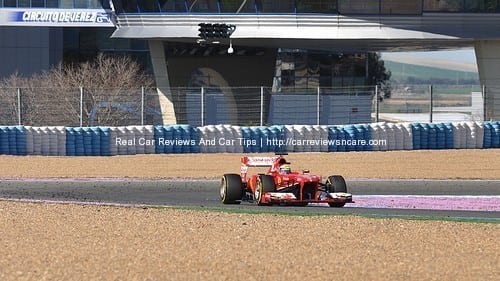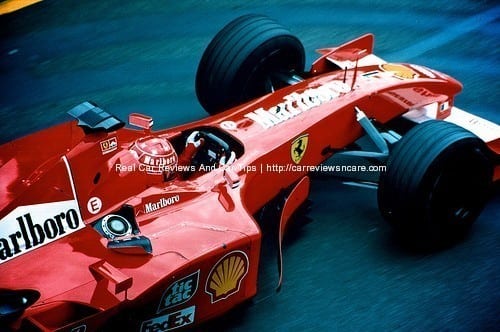Formula 1 Cars: Massive Power
The creation of huge amounts of downforce has become the most important design factor in an F1 car. If the regulations allowed it, it would be easy enough to build a car with way more power than the current ones have, but without the downforce provided by the aerodynamics, you wouldn’t win any races with it. The car needs to be stuck to the track hard, in order to go round corners quickly enough to be competitive.
Rules and Regulations
There are many other ways in which the technology is controlled. As one aspect of design makes the cars quicker, F1 rules tend to use other aspects to slow the cars down, both for safety reasons and to make the cars more efficient. It’s these efficiency measures that push road car technology forward.
However, talk of “slowing the cars down” has to be understood in context, and that context is “very, very fast indeed” to begin with. The 0-100 km/h figure for an average F1 car is well under two seconds. In under four seconds, the car will have reached 200 km/h, and within about 8.5 seconds, 300 km/h.

Stopping Power
With that kind of acceleration available, drivers need to be able to stop fairly quickly as well. Stopping distances achieved by F1 cars put roadsters like the Bugatti Veyron to shame. Normal F1 stopping distance from a speed of 200 km/h is about 65 metres, and will take just over two seconds. At some circuits, drivers experience up to 5.5g – i.e. a force of 5.5 times normal gravity – under rapid deceleration. For comparison, the Veyron driver is unlikely to get past 1.3g while braking.

New for 2014
The 2014 season will also feature new and returning tracks, and some drivers will have changed teams. F1 promises to be much less predictable than the last couple of years – if you’re thinking about putting some money on next season’s action, you might find some online sports betting advice from Dafabet at http://www.dafabetsports.com/en useful.
For the 2014 season, the drivers are going to have to deal with entirely new engines, and their increased complexity is almost certainly going to lead to technical problems for the teams in the earlier races. The cars are moving from 2.4 litre V8’s to 1.6 litre V6 turbos; the casual fan may think this is going to make the action much slower, but in fact the new Energy Recovery Systems (ERS) are going to provide a much bigger boost in power, which will be available for longer than the current KERS (Kinetic ERS).
Facebook Comments